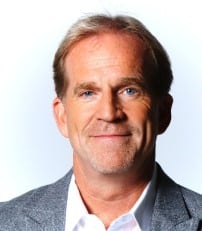[ad_1]
For years, it wasn’t uncommon for workers at efficiency teaching firm Exos to work within the workplace six days every week to make sure their purchasers’ wants had been being met, Chief Folks Officer Greg Hill recollects. Certainly, it was frequent follow at organizations across the globe, regardless of contributing to worker burnout.
The follow ended abruptly in March 2020 when the pandemic started. However burnout didn’t. The situation, described by researchers as when persons are extremely engaged over a protracted interval with out the non-public expertise and organizational help to keep up their wellbeing, escalated worldwide. At Exos, workers struggled with caregiving, well being issues and having everybody at residence on a regular basis, Hill says.
Right this moment, though the pandemic has subsided, corporations proceed to see burnout as workers battle with work/life stability as they return to the workplace. Earlier this 12 months, 70% of Exos workers mentioned they often really feel burnt out.
See additionally: Can a 4-day workweek present well being advantages to workers?
Numbers like that prompted Hill and his group to develop a strategic response: a four-day workweek known as You Do You Fridays and an accompanying framework for balancing work and relaxation known as the Readiness Tradition Code. The applications started final Might as a six-month pilot involving a couple of third of Exos’ workers. They had been so profitable at boosting productiveness whereas lowering burnout that by November, the applications had been instituted for the complete workforce of three,000 folks.

“For us, it wasn’t nearly a shorter, four-day workweek,” Hill says. “Our purpose was to assist our teammates discover a stability between work and relaxation so that every particular person had the capability to succeed in their full potential and show that work plus relaxation equals success.”
He says it’s working, citing information from worker surveys, wearables, supervisor value determinations and Google Suite’s productiveness and collaboration apps. Earlier than the pilot program, for instance, 70% of workers reported occasional burnout. Afterward, that quantity fell to 36% amongst workers within the pilot, in response to Exos’ lately launched report detailing its experiment.
Worker turnover additionally decreased, falling from 47% in 2022 to 29% in 2023, whereas workers’ self-reported productiveness shot up. Earlier than the pilot program, about two-thirds of workers reported they spent their time working effectively, in response to the report. Six months later, that determine rose to greater than 90%.
In the meantime, within the final two quarters of 2023, the corporate’s gross sales pipeline grew 211% year-over-year, regardless of the shorter workweek for some throughout that point.
“Probably the most shocking reality is that Exos’ workforce has not misplaced productiveness, however as an alternative simply began working in a special, simpler and environment friendly manner with extra versatile, output-driven work schedules,” Hill says.
4 folks methods for lowering burnout
Hill says these points of its new folks technique helped Exos scale back burnout whereas sustaining enterprise efficiency:
4-day workweek, aka ‘You Do You Fridays’
Staff now work a condensed week—40 hours over 4 days—and might select their very own exercise on Fridays: leisure, catching up on particular person work or recovering from work. The majority take the time without work. As for being within the firm’s Phoenix headquarters or workplaces throughout the nation, workers can select the place they spend their 4 days of labor. Some are absolutely distant, some are hybrid with one to a few days within the workplace relying on their work group and others are within the workplace full-time, Hill says.
Microbreaks
Commonplace inner conferences, which beforehand had been 30 or 60 minutes, have been decreased to 25 minutes or 50 minutes. This builds in 5- and 10-minute microbreaks all through the day, even when workers have back-to-back conferences.
Higher conferences
Managers and group leaders organizing these now-shorter conferences should additionally present an agenda and objectives for every assembly. They’re additionally required to think about the time zones of dispersed attendees. That may imply embracing asynchronous groups and work schedules or just being conscious when scheduling conferences throughout time zones. Exos asks workers to incorporate their time zone and dealing hours of their e-mail signatures, Hill says.
Intentional scheduling
Tuesdays and Thursdays are devoted assembly days, and Mondays and Wednesdays are focus days for particular person work. This scheduling goals to keep away from process switching and enhance productiveness and effectivity.
Mindset shift required
Because of an current friendship between Exos CEO Sarah Robb O’Hagan and well-known office creator and organizational psychologist Adam Grant of Penn’s Wharton College of Enterprise, the corporate’s pre- and post-pilot information was analyzed by two specialists: Grant and his colleague Marissa Shandell, a doctoral candidate.

Considered one of Grant’s high takeaways might have broad implications for organizations globally.
“A key lesson is broader than the outcomes themselves—it’s in regards to the mindset that led to the outcomes,” Grant writes within the Exos report.
“Many leaders are reluctant to check new fashions of working; they’re afraid of giving up on the tried-and-true and setting precedents that could be tough to uphold. But, failing to discover completely different potentialities makes it unimaginable to innovate and alter.”
Study extra about methods to safeguard workers’ psychological well being on the Elevate Folks, Ignite Change (EPIC) convention on April 24-26 on the Bellagio in Las Vegas. Attend the session on Making ready Managers for the Dialog on Psychological Well being.
[ad_2]
